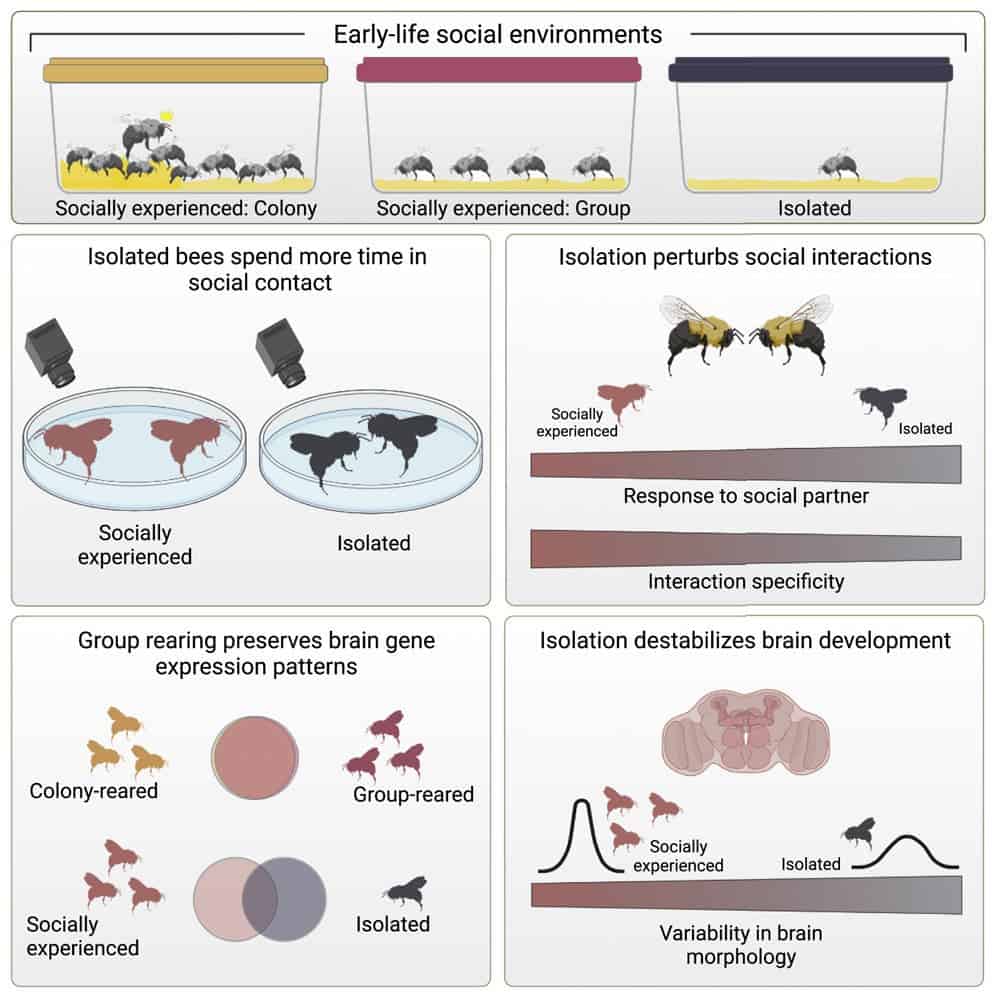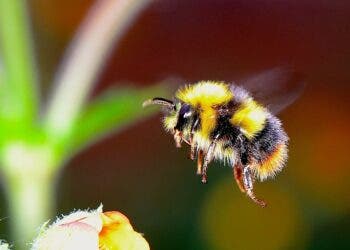They’re big, hairy and extremely social, relying on their social instincts for survival. Bumblebees (tribe Bombini) live in colonies of up to 200 workers, with queens emerging in spring after hibernation to find nest sites and workers gathering pollen and nectar to feed grubs. They are important pollinators of many plants and fruit trees and, as it turns out, they don’t like to spend much time alone.

A new study explored how bumblebees were affected by being socially isolated during their developmental period. Surprisingly, the researchers found that the isolated bees blossomed into social butterflies, showing an increase in “friendly” behaviour. Basically, after a period of isolation, they would spend the next period making up for it by being more social — the opposite of what the researchers from Princeton University had initially predicted.
The team carried out a set of tests on three groups of bumblebees. Some were isolated, some remained with their original colony and some were housed with a smaller group of bees. The researchers expected (as seen previously with other organisms) that socially-isolated bees would have more aggressive or antisocial behaviour. But the bumblebees had a different idea.
“Contrary to that, we did not see an increase in aggressive behaviours in bumblebees. In fact, we saw an overall increase in affiliative behaviour,” Yan Wang, study author, said in a statement. “The bumblebee has emerged as a really wonderful candidate for developing a lot of cutting-edge tools for studying sociality, as well as brain science.”
The study also identified a set of genes that were different in the brains of the isolated bees compared to the other two groups included in the study. While it will require more research, the team’s hypothesis behind higher levels of sociality in isolated bees is that they never learnt how not to be reactive to others.
Looking at bees’ behaviour
For their study, the researchers went through a period of trial and error in order to find out how to separately house over 300 bees in their lab room. They ended up with a structure they called the Bee Hotel, in which each of the bumblebees was housed in its own private space – a small box in a set of other small boxes stacked together.

The bees had an initial nine-day staycation, after which the researchers started collecting data. They carried out tests to analyze gene expression and physical size of regions of the bees’ brains, placing bees in Petri dishes to monitor their behaviour both alone and in pairs. They used software (SLEAP) to quantitatively analyze the bee’s behaviour.
The software, created by Princeton professors, works by first feeding videos of the animal is supposed to track. It then uses artificial intelligence to recognize body parts and provides pixel coordinates for each body part. After identifying the body parts, the researchers used another software (Motion Mapper) to extract dynamic information from the body parts’ positions.
This enabled the team to understand the location of the bees’ limbs and also how the bees are moving. One example of the “friendly” behaviour the researchers observed was the bees rubbing their antennae on each other’s heads and bodies. When they do this, they are transmitting chemical information and get to know the members of the colony.
The study showed that the bees that had been isolated, when reintroduced to another bee, did this much more often than the bees that were kept in social groups during the study. And they did this in an unusual way too, with variability in how they touched each other. It’s like humans instead of touching their hands would touch their knees, the researchers said.
The data obtained left the team with a lot of open questions, so this could be just the start of much more in-depth work in bumblebee social behavior and brain development. Researchers now want to know whether increased social interaction due to isolation is common across social insects and whether this increase is due to a lack of learning on how to respond to social partners, or if it’s because bees never learned to avoid negative interactions.
The study was published in the journal Current Biology.





